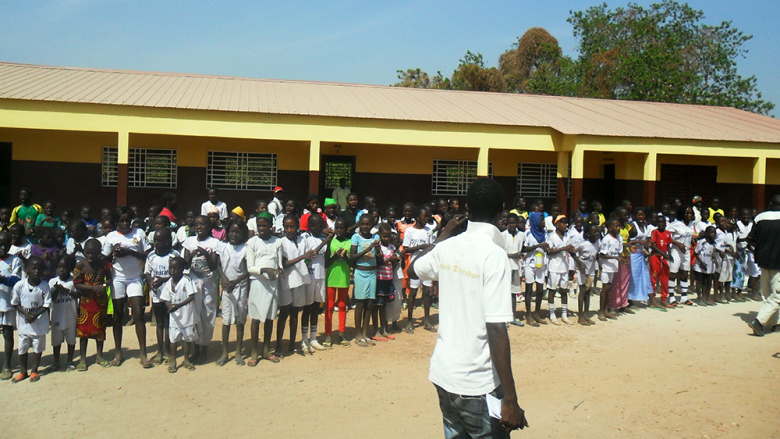This begins as a story of the life-saving importance of roads: Like many children in Guinea-Bissau, Daisy lives some way off the main road. The nearest hospital is 10 km away. Fatinha, her mother, had to put her on a motorbike and rush her to the hospital to get help when she was bitten by a snake one night. Daisy’s story—and her life—could have ended tragically but, instead, its ending is a happy one: her venomous snake bite was treated, all thanks to a recently rehabilitated road.
Guinea-Bissau is one of the poorest, most fragile countries in the world, with a population of only 1.85 million inhabitants. Though not far from Bissau, the capital, most roads in the Pefine–Biombo region in which Daisy and her mother live are made of unpaved dirt. But having them repaired is one of the things local people have opted to do under a project known by its Portuguese acronym, PDCC, or the Rural Community-Driven Project in Guinea-Bissau, which works with communities to rebuild infrastructure, depending on their needs.
“They make a democratic decision,” says Alfa Djalo, the project manager. “Communities of up to 1,000 inhabitants each have a 65 million CFA francs budget to decide on what they see as important to rebuild. They may choose a school, a road, a spring, or even a rice field.”
As a result, women have more access to clean, freshwater springs, as well as to roads connecting them to markets, which helps them sell better products at a better price. Water-related diseases have decreased dramatically. And communities cooperate to take good care of all the new infrastructure.
To market
The story continues with the impact roads have on petty trade: As Zanda waits for a lift to take her a 18km journey to Caracol Market to sell mangos collected from her family’s trees, she recalls the times she had to carry just half of what she has in her hands today. Now, she can make up to 8,000 CFA francs—more than double what she made before. This will allow her to pay for her children’s schooling and clothing, and buy quilts used locally during traditional ceremonies.
Djonsinho Ca also reminisces on how hard it used to be in this part of the country before the road was repaired, even if you owned a vehicle. “Only 20 ton trucks could reach where we are today,” he tells me in Pefine de Areia, a mere 25km from Bissau. “This road was full of potholes and got worse during the rainy season, when medical emergencies put our lives in jeopardy.”
"Before, we could not sell our mangos and cashew nuts,” he adds, “but today, you see vehicles buying cashews from us at good prices.” He’s pleased to have the road but their next priority is a health center: “We have space provided by the Catholic church, but there is no personnel or equipment yet.”

Schools are so crowded they operate in three daily shifts
Alfa Umaru Jalo/World Bank

